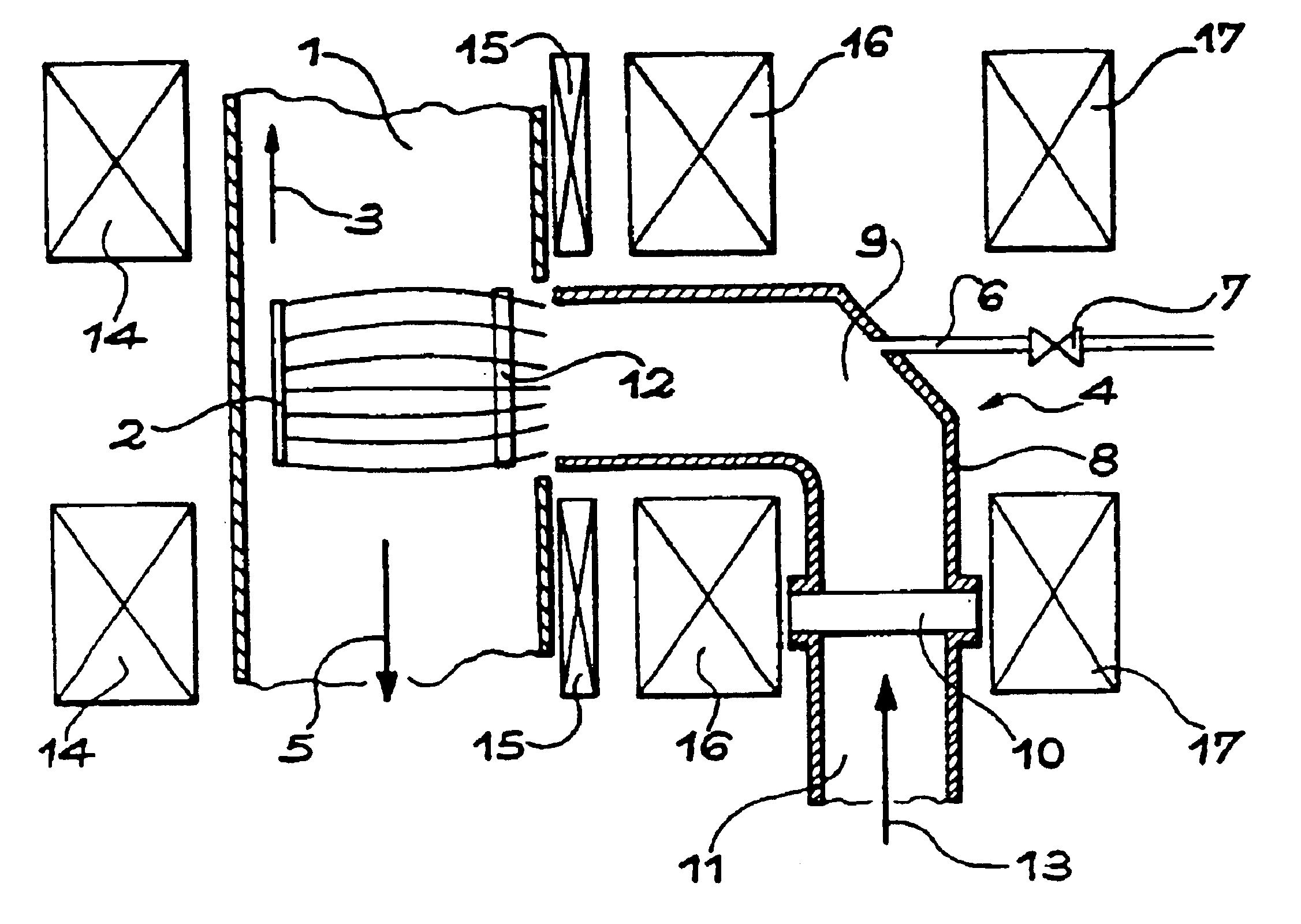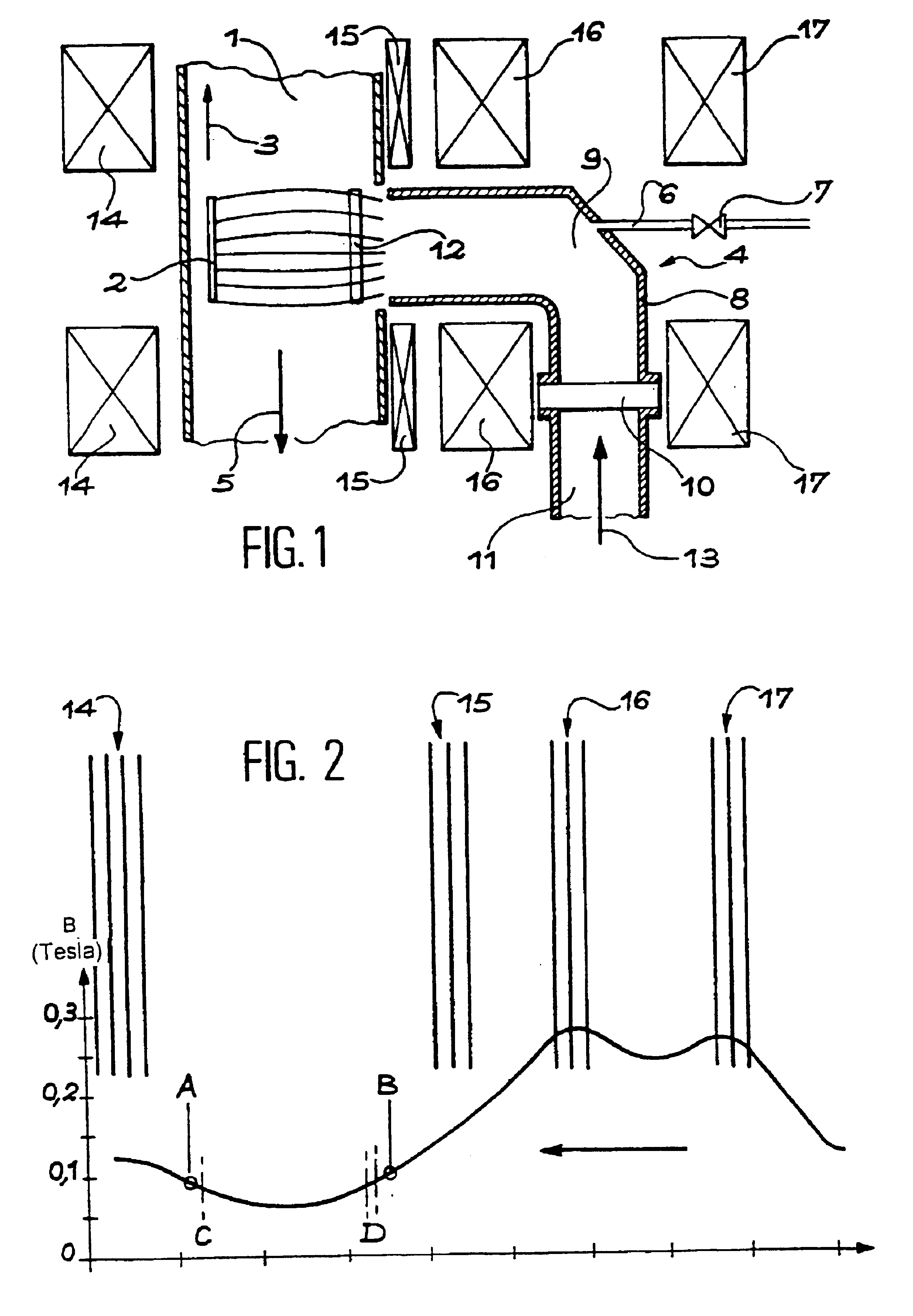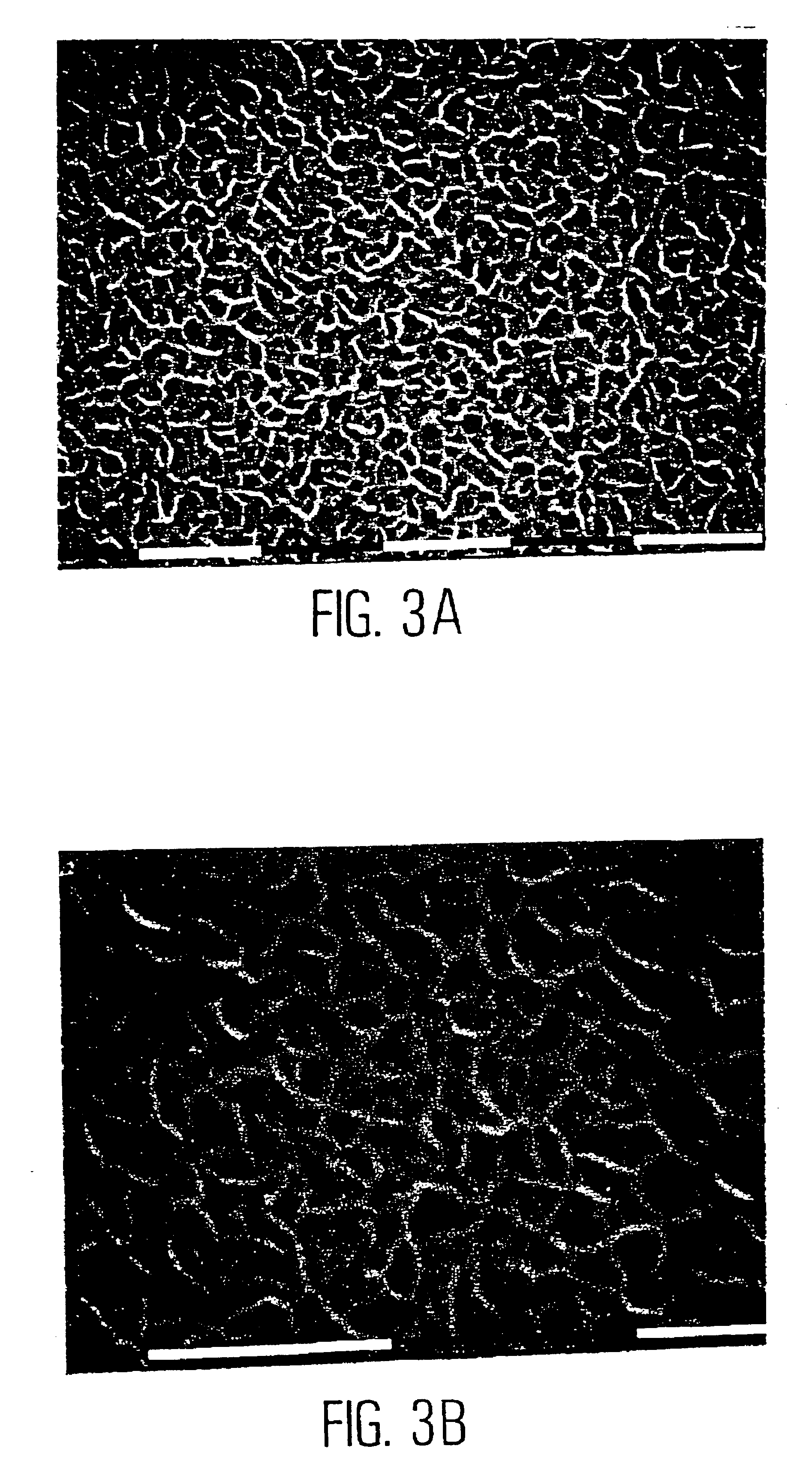Method and device for electronic cyclotronic resonance plasma deposit of carbon nanofibre layers in fabric form and resulting fabric layers
a carbon nanofibre and electronic cyclotron technology, applied in the manufacture of electrode systems, electric discharge tubes/lamps, tubes with screens, etc., can solve the problems of carbon fibre films, with the structure described above and without catalyst, that have never been obtained by the processes of the prior ar
- Summary
- Abstract
- Description
- Claims
- Application Information
AI Technical Summary
Benefits of technology
Problems solved by technology
Method used
Image
Examples
example 1
In this example, the gas used is methane and the substrate is silicon heated to 640.degree. C.
The pressure within the deposition chamber or enclosure is 6.10.sup.-5 mbar.
In this way, multi-layers of a web or network of interconnected carbon nanofibres or nanotubes with a fibre diameter of around 20 nm are obtained, which are like a spider's web, and whose average mesh size is less than 200 nm.
FIGS. 3A and 3B are scanning electron microscope (SEM) photographs of such multi-layers.
We have also removed a film (single layer) from the multi-layer deposit and spread it out on the grid of a transmission electron microscope (TEM): this type of operation highlights the solidity of the films obtained by the process according to the invention. The transmission electron microscope (TEM) photograph of the single layer is shown in FIG. 5.
example 2
In this example the gas used is methane and the substrate is borosilicate glass heated to 680.degree. C.
The pressure within the deposition chamber or enclosure is 8.10.sup.-5 mbar.
One thus obtains, in the same way as in Example 1, multi-layers of a web or network of interconnected carbon nanofibres or nanotubes with a fibre diameter of around 20 nm are obtained, which are like a spider's web, and whose average mesh size is near, or less than, 100 nm.
FIGS. 4A and 4B are scanning electron microscope (SEM) photographs of such multi-layers.
Apart from these SEM analyses and, if appropriate TEM analyses, other analyses may also be carried out. The results of all of the analyses carried out on the multi-layers or single layers in Example 1 and 2 are as follows:
Composition: carbon (several % of hydrogen were identified) (determined by ERDA--Elastic Recoil Detection Analysis)
TEM: diffraction photographs: the distance d (hkl) observed is 3.47 A, which corresponds more to a nanotube type struc...
PUM
| Property | Measurement | Unit |
|---|---|---|
| pressure | aaaaa | aaaaa |
| temperature | aaaaa | aaaaa |
| frequency | aaaaa | aaaaa |
Abstract
Description
Claims
Application Information
 Login to View More
Login to View More - R&D
- Intellectual Property
- Life Sciences
- Materials
- Tech Scout
- Unparalleled Data Quality
- Higher Quality Content
- 60% Fewer Hallucinations
Browse by: Latest US Patents, China's latest patents, Technical Efficacy Thesaurus, Application Domain, Technology Topic, Popular Technical Reports.
© 2025 PatSnap. All rights reserved.Legal|Privacy policy|Modern Slavery Act Transparency Statement|Sitemap|About US| Contact US: help@patsnap.com



